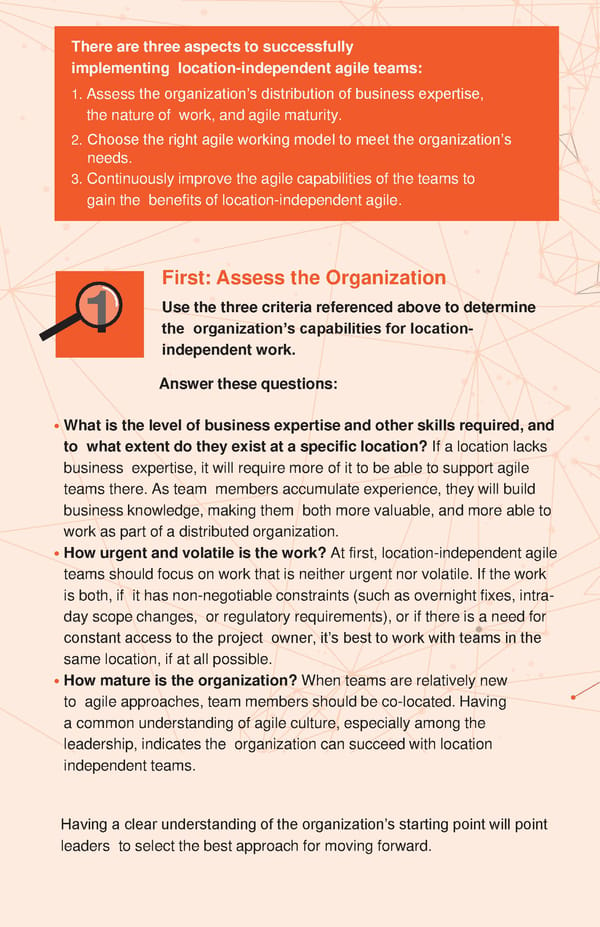Successfully Implementing Location-Independent Agile Teams
There are three aspects to successfully implementing location-independent agile teams: 1. Assess the organization’s distribution of business expertise, the nature of work, and agile maturity. 2. Choose the right agile working model to meet the organization’s needs. 3. Continuously improve the agile capabilities of the teams to gain the benefits of location-independent agile. First: Assess the Organization 1 Use the three criteria referenced above to determine the organization’s capabilities for location- independent work. Answer these questions: •What is the level of business expertise and other skills required, and to what extent do they exist at a specific location? If a location lacks business expertise, it will require more of it to be able to support agile teams there. As team members accumulate experience, they will build business knowledge, making them both more valuable, and more able to work as part of a distributed organization. •How urgent and volatile is the work? At first, location-independent agile teams should focus on work that is neither urgent nor volatile. If the work is both, if it has non-negotiable constraints (such as overnight fixes, intra- day scope changes, or regulatory requirements), or if there is a need for constant access to the project owner, it’s best to work with teams in the same location, if at all possible. •How mature is the organization? When teams are relatively new to agile approaches, team members should be co-located. Having a commonunderstanding of agile culture, especially among the leadership, indicates the organization can succeed with location independent teams. Having a clear understanding of the organization’s starting point will point leaders to select the best approach for moving forward.
 Successfully Implementing Location-Independent Agile Teams Page 2
Successfully Implementing Location-Independent Agile Teams Page 2